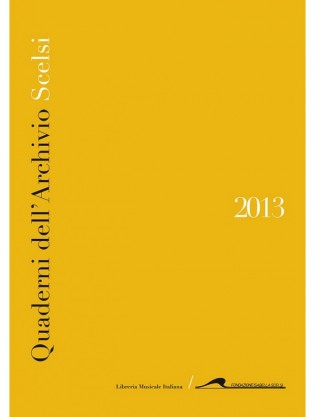Piano Sonatas no. 2, 3 and 4 constitute a corpus sufficiently representative of the stylistic tendency of Scelsi from the end of the Thirties to the end of the Forties, even though the exact dating is not yet definite. Compositive characteristics can be discovered in these sonatas that are significantly echoed in his production during the Fifties: characteristics that relate to the temporal concept, the repetitive melodic elements and the ostinato. It is essential, therefore, to draw up a classification of the different types of ostinato and of reiterated structure that are present in these works: some of these procedures appear to be considerable debtors of the typical stylistic tendencies of the historic eighteenth century, while others foreshadow a treatment of temporal perception and of resonance which become a fully developed compositive definition in Scelsi’s music only from the Fifties.
The paper proposes a taxonomy of the aforesaid procedures through an analysis of the three Sonatas, taking into account not only the passages characterized by reiterated elements, but also the formal context in which they are inserted. From comparison with works of the next ten years – for instance Suite no. 8 (1952) and Quattro illustrazioni (1953) – it can be noted that only two types of ostinato are utilized and readjusted in formal contexts which are fairly different from those of the Sonatas. In the compositions of the Fifties, in fact, repetition becomes a means for developing the ‘infrasonic investigation’ that reached full maturity in Quattro pezzi (ciascuno su una nota sola) and required great artistry in the use of microtonality. Some reiterated elements of agglomerates submitted to subtle modifications and to the resolution of the harmonic components (which have brought us to see in Scelsi as a precursor of spectralism) reveal a research into sound which foreshadows the subsequent microtonal phase and the consequent abandon of the piano as the privileged instrument of his compositional activity.
 View larger
View larger

